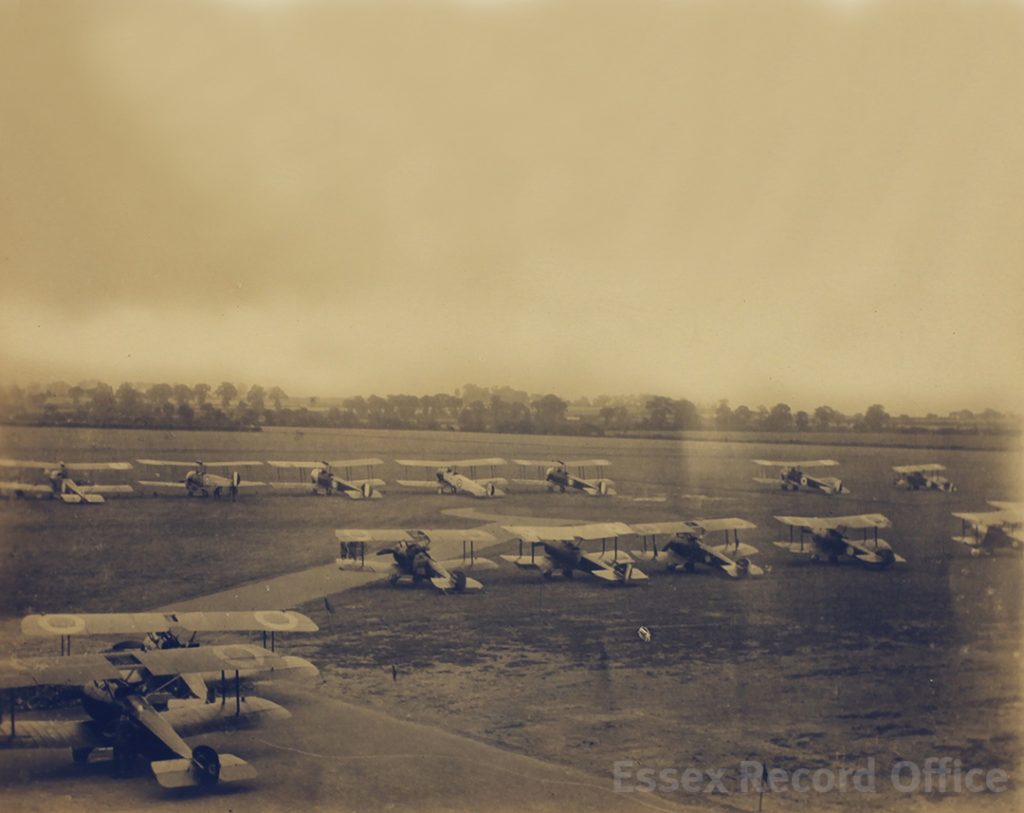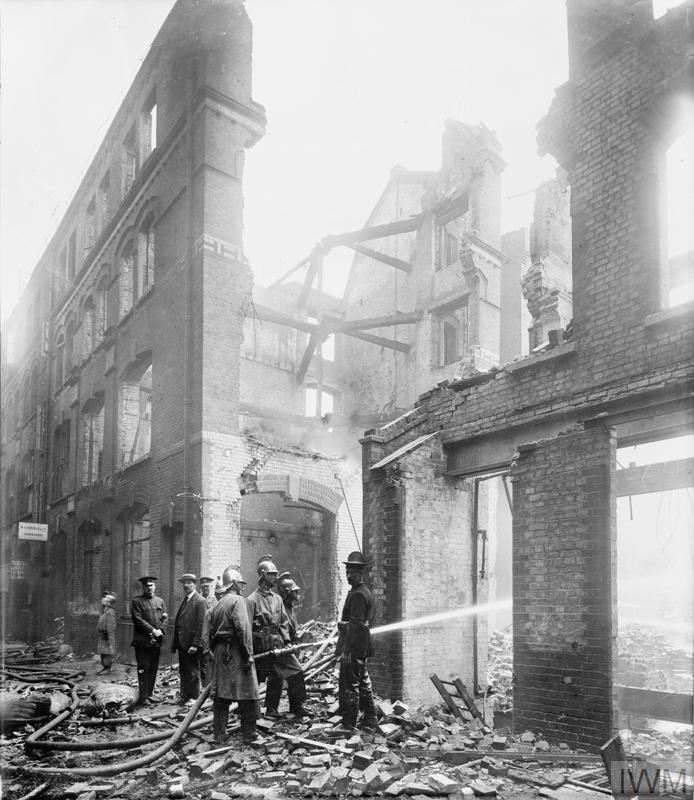100 years on from the establishment of the Royal Air Force (RAF) in April 1918, we have chosen this photograph of Stow Maries Aerodrome during the First World War as our Document of the Month (T2603 Part 22).

Stow Maries Great War Aerodrome, near Maldon, is considered to be the best preserved First World War airfield in Europe. Its 24 original buildings are Grade II* listed, and today a major project is working on restoring and interpreting the site for visitors.
Powered flight was still a very new phenomenon during the First World War; the Wright brothers had made the first powered flight only in 1903. Despite the fact that the aircraft of this time were flimsy, dangerous, unreliable and uncomfortable, in 1912 the British army had established the Royal Flying Corps (RFC), and in 1914 the Royal Navy formed the Royal Naval Air Service (RNAS). On 1 April 1918 these two services were combined to form the RAF, the world’s first independent air force.
Aircraft were used on the battlefields, initially for reconnaissance and then as fighter planes and bombers, but they were also used for home defence. From early 1915 the Germans began air raids on Britain, first with Zeppelins and later with Gotha planes. From late 1915, Home Defence Squadrons were formed to defend against this threat.

Firemen hose down the smouldering remains of Cox’s Court off Little Britain in the City of London after a Gotha air raid on 7 July 1917. Copyright: © IWM. Original Source: http://www.iwm.org.uk/collections/item/object/205196283
One of these was No. 37 Squadron, formed in September 1916. Its HQ was at Woodham Mortimer, and it had three flights, based at Stow Maries, Rochford, and Goldhanger. The job of the Squadron was to help defend the eastern approaches to London.
The first commander of Stow Maries was Lieutenant Claude Ridley, MC, DSO. Despite being aged just 19, Ridley had already served with the RFC in France and on home defence airfields. He earned his Distinguished Service Order when a mission to drop a spy behind enemy lines went wrong, and he ended up trapped on the German side. Despite having no command of either French or German, over the course of several weeks he managed to evade capture and made his way to the Netherlands. Not only did he survive to escape, he collected information on enemy activity along the way. He was no longer allowed to fly in France as it was judged that if he had crashed behind enemy lines again he would be shot as a spy, so he was assigned to home defence duties and put in command of Stow Maries.
Stow Maries was operational as a home defence airfield between May 1917 and May 1918, with 81 sorties flown to intercept enemy aircraft. At its height there were 219 staff based there, 16 of whom were aircrew, and 20 of whom were women. During this time, 10 members of 37 Squadron were killed, 8 of them in accidents (which goes to show just how dangerous flying was at this time).
Initially the airfield was equipped with BE12s, which were too slow to keep up with the German planes. Eventually it was sent Sopwith Camels and Avro 504ks, which are the planes which can be seen in our photograph. The Sopwith Camel was the most famous British fighter aeroplane of WW1 and was first introduced on the Western Front in 1917 (the beginning of the video below shows one being started up and taking off). The Camel, so-called because of the hump-shaped protective covering over its machine guns, shot down more enemy aircraft than any other Allied fighter plane during the First World War.
The Avro 504k is one of the greatest training aircraft ever built. It was used to equip training units first in the RFC and later the RAF. Always knows as a training aircraft, Avro 504ks were also used as an emergency home defence fighter operating against German aircraft raiders.
Stow Maries continued as an aerodrome until Spring 1919, after which the site was returned to agriculture. Many of the buildings constructed during the First World War for use by the RFC and RAF survive today, and Stow Maries is now undergoing a major conservation project and is open to visitors.
The photograph will be on display in the ERO Searchroom throughout April 2018.
